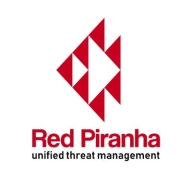Cisco XDR is primarily used for threat detection and response. It integrates with existing security infrastructure, offering real-time monitoring and quick incident response. This makes it valuable for organizations needing comprehensive security management.
Cisco XDR provides robust threat detection, advanced analytics, and automated response capabilities. Users appreciate its integration with multiple security tools, offering comprehensive visibility across networks. The customizable dashboards help streamline incident management, and updated threat intelligence ensures effective protection against emerging threats. It assists in consolidating alerts from different sources, streamlining investigation efforts and minimizing time to remediate incidents. However, users have noted the need for better integration capabilities with third-party tools, improved performance speed, and enhanced reporting features. Some find it difficult to configure and believe its analytics could be more intuitive. There is also a desire for more detailed documentation and more responsive technical support.
What are the most important features of Cisco XDR?
- Threat Detection: Identifies potential threats quickly and accurately.
- Advanced Analytics: Provides detailed insights into security events.
- Automated Response: Responds to incidents with minimal manual intervention.
- Comprehensive Visibility: Integrates with various tools for a holistic view.
- Customizable Dashboards: Allows for tailored incident management interfaces.
- Updated Threat Intelligence: Keeps protection measures current against new threats.
What are the key benefits and ROI to look for in reviews?
- Real-Time Monitoring: Enhances proactive threat management.
- Quick Incident Response: Reduces downtime during security incidents.
- Streamlined Investigations: Consolidates alerts for efficient analysis.
- Improved Security Posture: Detects advanced persistent threats with precision.
- Enhanced Efficiency: Minimizes time to remediate incidents.
In industries such as finance, healthcare, and government, Cisco XDR is implemented to enhance security measures and protect critical data. Its advanced threat detection and automated response mechanisms are crucial for organizations facing sophisticated cyber threats. Meanwhile, businesses in sectors like retail and manufacturing benefit from its ability to integrate with security infrastructure, ensuring continuous monitoring and protection of assets.
Crystal Eye XDR
Extend, Detection and Response
Crystal Eye XDR (Extended Detection & Response) protects, detects and responds to threats across your whole organisation, all from a single unified platform. It secures your organisation from the cloud to the endpoint with a range of integrated security controls.
Problems
- Security incidents are becoming more complex while compliance obligations are becoming harder to meet.
- Organisations are struggling with too many products from different vendors which aren’t integrated together.
- Companies need to be able to quickly identify real threats from all the noise and then initiate rapid response procedures to minimise business impact.
Solution
- XDR solves these problems by avoiding the complexity of configuring and monitoring separate security systems.
- XDR offers a single unified platform that delivers security protection, threat detection and incident response across your whole organisation.
Benefits
- Reduce the risk of a security incident.
- Reduce time to detect and respond to an event.
- Reduce the cost of securing your business.
XDR – Extended Detection & Response
- XDR involves the collection and correlation of event data from endpoint, network and cloud sensors to identify real threats anywhere in your environment and automatically trigger a coordinated response to secure your business.
- The first fully-integrated detection and response platform is ready to go out-of-the-box, so it delivers a consistent level of security without the complexity of integrating products from multiple vendors.
- Our network-based and cloud-based sensors (Crystal Eye XDR) deliver Network Detection & Response (NDR), in combination with our host-based sensors (XDR Endpoints) deliver End-Point Detection & Response (EDR) which all work together to deliver Extended Detection & Response (XDR).
- Crystal Eye Orchestrate is our centralised management console which takes care of the service delivery and also acts as a data lake to collect all the data for correlation and response coordination. This is a significantly simpler process due to the standard data format and shared data storage used across the Crystal Eye products, which avoids the laborious task of normalising and correlating data from different technologies.
More than SIEM
- XDR avoids the complex integration required with Security Information & Event Management (SIEM) and breaks down the silos between different systems by having a single data store for all events.
- Where SIEM focuses on pulling the data together into events, XDR has the added benefit of pro-active and automated rapid response to stop threats in their tracks before real damage occurs. XDR goes a step further to provide advanced threat detection with research analysis labs to support defensive efforts.
Integrated SOAR
- Our XDR solution has integrated Security Orchestration, Automation & Response (SOAR) processes which allow you to automate responses to low-risk threats and coordinate responses to high-risk threats with the relevant resources.
- These capabilities are typically not accessible for most organisations, but our integrated SOAR approach provides a comprehensive, cost-effective response solution available to businesses of any size. Our automated incident response process gets executed immediately when a breach occurs and is significantly cheaper than alternative options.


